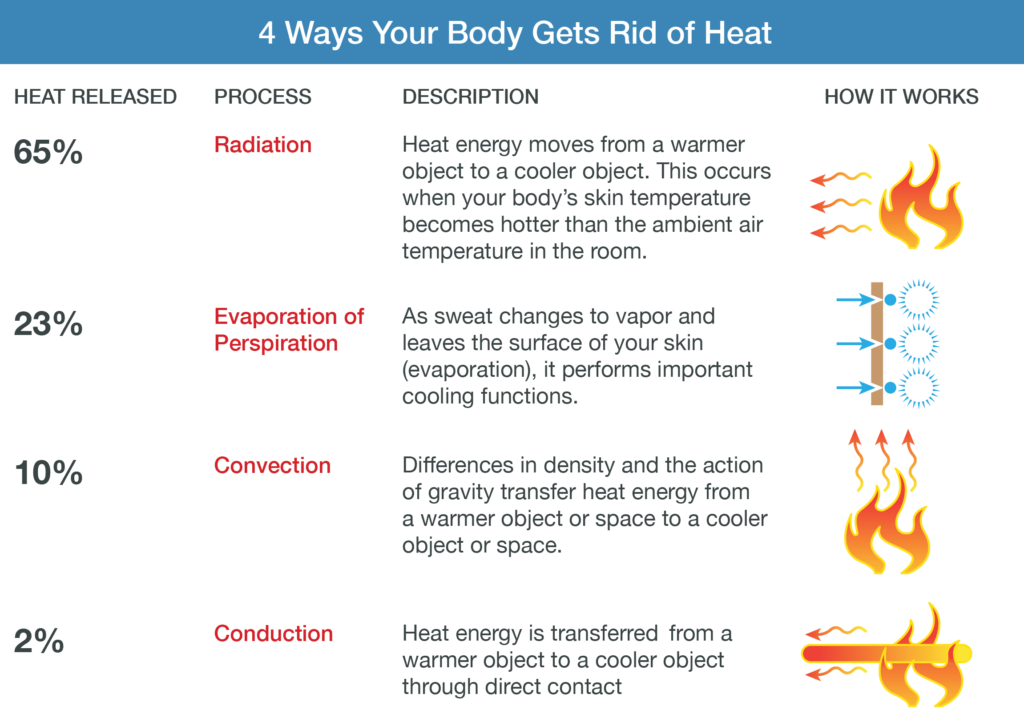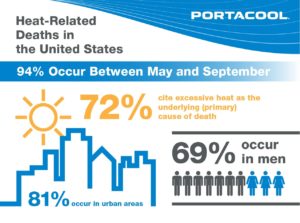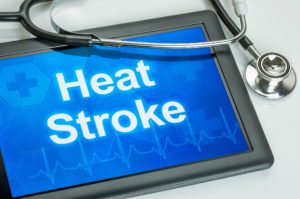
According to the Occupational Safety and Health Administration (OSHA), thousands of people develop an illness or injury every year from heat exposure in their work environment. In some extreme cases, these injuries can be fatal. In fact, the National Weather Service found that heat produces more fatalities each year than any other weather event.
Due to the severity of the issues that arise from heat-related illness, it’s crucial that you take steps to prevent excessive temperatures, improve employee work conditions in hot environments, and identify the warning signs of heat-related illness. This will not only reduce the risk of heat-related injuries but will significantly improve employee performance and productivity.
There are a variety of factors that impact your body heat levels in the work environment:
These factors affect the equilibrium your body establishes from heat gain and heat loss. When evaluating the potential for heat hazards in your workplace, it’s essential to consider how all of these factors are impacting your employees.
You can use this OSHA table to assess the way an employee’s level of workload/physical activity impacts their metabolic heat.
When a working environment becomes very hot, your body compensates by pumping blood to your skin to maintain a proper inner core temperature. There are four primary methods by which your body releases heat.

Keep in mind that while 95°F results in a critical point where your body’s coping mechanisms become ineffective, the negative impacts of excessive heat begin at much lower temperatures. Productivity and performance start to decrease when room temperatures are between 75°-80°F, and heat-related illnesses can develop well before the room temperature reaches 95°.
Heat dissipation, the process where your body releases excess heat, is crucial to your ability to maintain a healthy internal body temperature. If heat dissipation doesn’t happen rapidly enough, your internal body temperature may rise to dangerous levels. At this point, the body resorts to pumping extra blood (up to 48% of your total blood supply) to the skin to increase perspiration. This leads to two significant issues:
The lack of blood being sent to your brain, organs, and muscles forces your heart to work harder to increase the blood supply to other vital organs — often beating as much as 150 times a minute. In addition, fluid loss from dehydration causes your blood to thicken. These two physiological responses are the primary reason why heat stress is a common cause of heart attacks.
Dehydration can have other serious impacts on employees. A study published in the Journal of Applied Physiology found that a 3% reduction in bodily fluids caused workers to experience a significant decrease in cerebral blood flow velocity when standing up, often resulting in a loss of consciousness. It can take a long time for your body to replace these lost fluids, and work may need to cease while your body rehydrates.
While hydration is crucial to restoring a healthy body temperature, it is often not enough. It’s common for your core body temperature to continue rising for up to 30 minutes after work is stopped unless additional actions are taken to cool the body.

Heat-related illness can manifest in a variety of different ways, including:
Make sure all managers and employees are familiar with these symptoms and know what to do in the event of a heat-related illness. Heatstroke is a medical emergency. If an employee exhibits signs of heatstroke, call 911 immediately. Then, move the individual to a cooler area and use a cold bath or sponging to reduce internal body temperature. Do NOT provide fluids to an individual suffering from heatstroke.
 OSHA regulations require employers to provide workplaces that are free of known safety hazards, including excessive heat. You should review OSHA’s recommended practices for safety and health programs in work environments when establishing your heat-related illness program.
OSHA regulations require employers to provide workplaces that are free of known safety hazards, including excessive heat. You should review OSHA’s recommended practices for safety and health programs in work environments when establishing your heat-related illness program.
The most critical time to combat heat-related illness is when outside temperatures rise in spring and early summer. When workers are first exposed to extremely hot work environments, it takes time for their bodies to acclimatize (build tolerance) to these increased temperatures. This acclimatization process can take several days. During this time, make sure employees:
In addition, you can significantly reduce the risk of heat-related illness by taking steps to control the temperature in your work environment.
As an employer, you have an obligation to provide a safe working environment for your employees. This includes making sure the ambient temperature is cool enough to prevent heat-related illness. If you have access to an outdoor air source, evaporative coolers provide an excellent cooling solution for your business.
Portacool has been the industry leader in evaporative cooling technology since 1990. All of our products are made in the USA at our Center, Texas manufacturing facility. In addition, our evaporative media, produced by our subsidiary company Kuul, is the only evaporative media made in the United States. It is manufactured using the finest quality materials and is specifically designed to meet the needs of Portacool evaporative coolers, ensuring you receive optimal cooling results.
You can achieve effective cooling in any environment. Portacool evaporative coolers can lower your ambient temperature by up to 30 degrees in dry climates. Due to the premium materials and technology used with our evaporative media, you also achieve excellent results in humid climates. In addition, all of our evaporative coolers are portable, allowing you to experience cooling in the areas where you need it most – both indoors and outdoors.
We have four lines of evaporative coolers, ensuring there is a model that will meet your specific needs. You can use our online tool to find out which products are right for your business. At Portacool, we’re able to address the needs of a wide range of business applications, including:
Find a retailer near you, or contact us today to learn more.